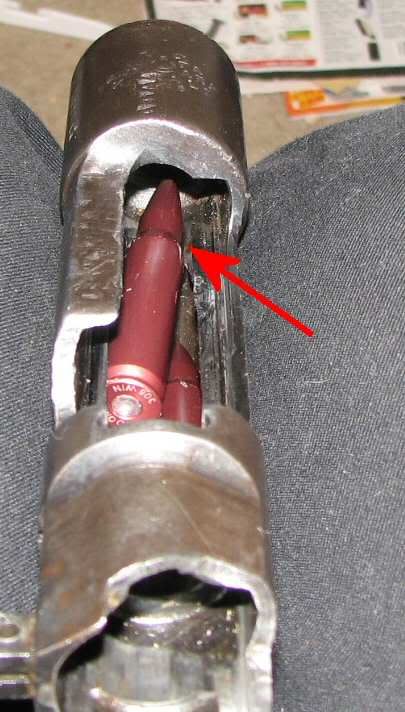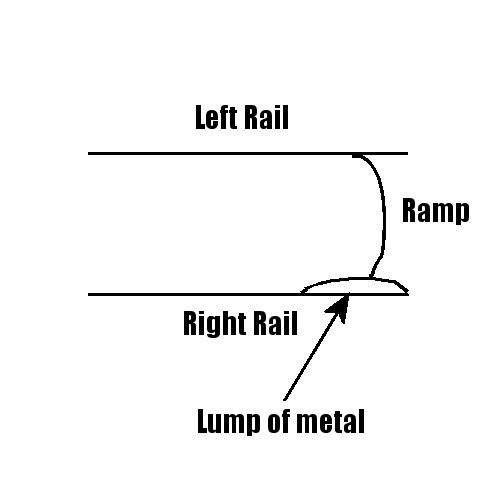And I got the barrel off. Confirmed that the barrel is a small-shank. I haven't got a gauge to determine if it's 12 tpi or 11.5 (as many Turkish Mauser's apparently are), but I figured to go ahead and chase the threads anyway with a tap for a small ring Mauser.
The receiver bottom is still flat, so it doesn't look like it's "sprung."
Barrel, however, is pretty thoroughly ruined. Still, since I planned to pitch it anyway, that's not a great loss.
Next up is selecting a barrel.
What I have in mind is one from ER Shaw's barrel builder is this:
- Mauser 95 for the small shank barrel. The Turkish Mauser has a large ring on the outside, but its internal diameter is that of the small ring Mausers.
- The #3 contour they call a "varmint" profile and tapers down to 0.700" at the muzzle (well, the profile shows for a 26" length so maybe it's a hair larger at the 24" length). Weight is 4 lb 3 oz.
Lengths range from 16 to 26 inches. I picked 24 since that seems to be the most common that I've seen in gun stores.
- The barrel could be had in 1 to 12 or 1 to 10 inch rifling. I don't know which would be better for my purposes.
Thoughts?
The receiver bottom is still flat, so it doesn't look like it's "sprung."
Barrel, however, is pretty thoroughly ruined. Still, since I planned to pitch it anyway, that's not a great loss.
Next up is selecting a barrel.
What I have in mind is one from ER Shaw's barrel builder is this:
Ok, my barrel will be a Mauser-95 Standard bolt face only with a number 3 contour and .308 Win caliber barrel. I chose the 4140 steel in the white metal type and finish, on a 24 inch barrel with no fluting. My barrel will have a 1 to 10 inch rifling twist rate.
- Mauser 95 for the small shank barrel. The Turkish Mauser has a large ring on the outside, but its internal diameter is that of the small ring Mausers.
- The #3 contour they call a "varmint" profile and tapers down to 0.700" at the muzzle (well, the profile shows for a 26" length so maybe it's a hair larger at the 24" length). Weight is 4 lb 3 oz.
Lengths range from 16 to 26 inches. I picked 24 since that seems to be the most common that I've seen in gun stores.
- The barrel could be had in 1 to 12 or 1 to 10 inch rifling. I don't know which would be better for my purposes.
Thoughts?





